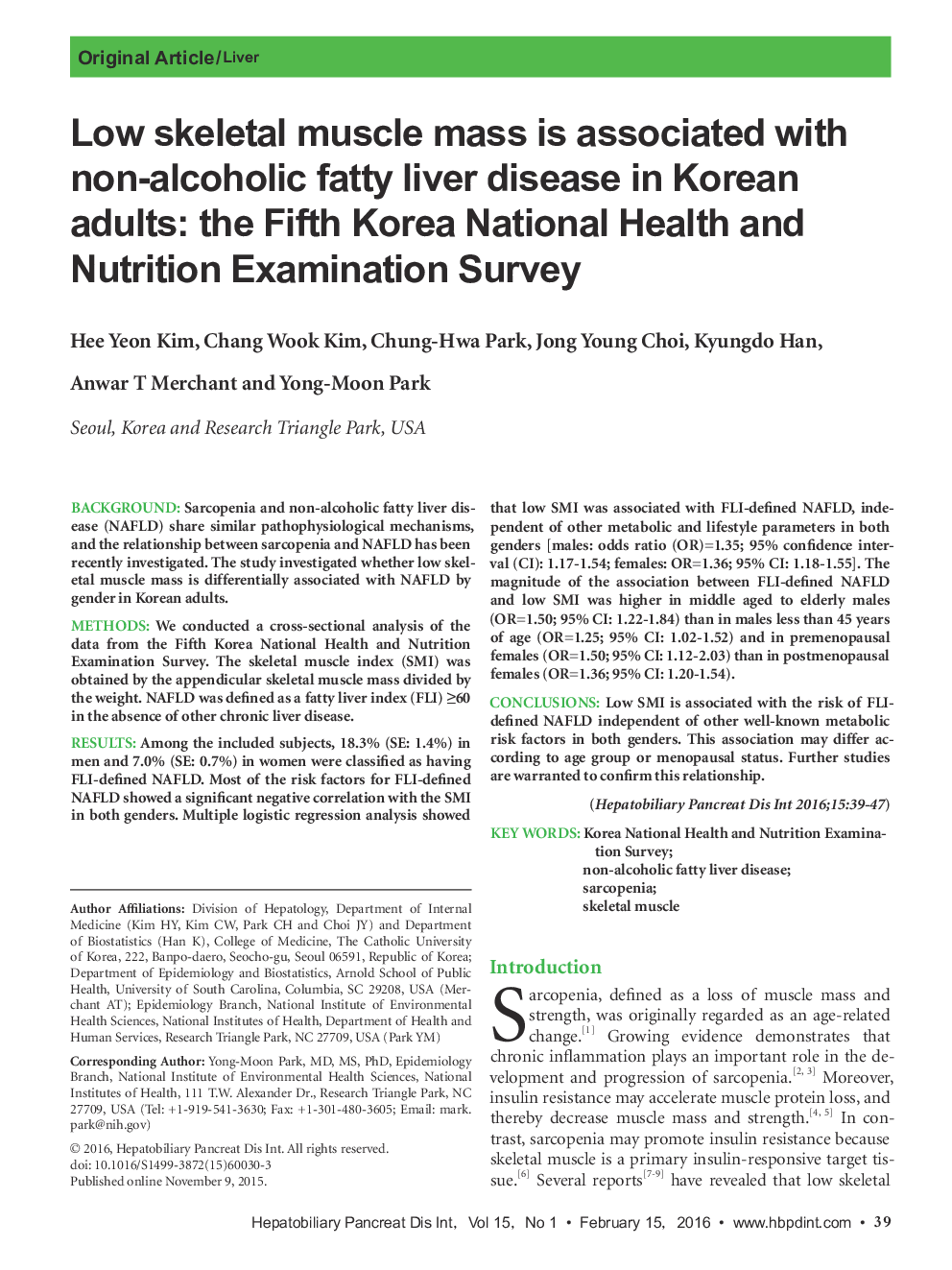| Article ID | Journal | Published Year | Pages | File Type |
|---|---|---|---|---|
| 3337131 | Hepatobiliary & Pancreatic Diseases International | 2016 | 9 Pages |
BackgroundSarcopenia and non-alcoholic fatty liver disease (NAFLD) share similar pathophysiological mechanisms, and the relationship between sarcopenia and NAFLD has been recently investigated. The study investigated whether low skeletal muscle mass is differentially associated with NAFLD by gender in Korean adults.MethodsWe conducted a cross-sectional analysis of the data from the Fifth Korea National Health and Nutrition Examination Survey. The skeletal muscle index (SMI) was obtained by the appendicular skeletal muscle mass divided by the weight. NAFLD was defined as a fatty liver index (FLI) >60 in the absence of other chronic liver disease.ResultsAmong the included subjects, 18.3% (SE: 1.4%) in men and 7.0% (SE: 0.7%) in women were classified as having FLI-defined NAFLD. Most of the risk factors for FLI-defined NAFLD showed a significant negative correlation with the SMI in both genders. Multiple logistic regression analysis showed that low SMI was associated with FLI-defined NAFLD, independent of other metabolic and lifestyle parameters in both genders [males: odds ratio (OR)=1.35; 95% confidence interval (CI): 1.17-1.54; females: OR=1.36; 95% CI: 1.18-1.55]. The magnitude of the association between FLI-defined NAFLD and low SMI was higher in middle aged to elderly males (OR=1.50; 95% CI: 1.22-1.84) than in males less than 45 years of age (OR=1.25; 95% CI: 1.02-1.52) and in premenopausal females (OR=1.50; 95% CI: 1.12-2.03) than in postmenopausal females (OR=1.36; 95% CI: 1.20-1.54).ConclusionsLow SMI is associated with the risk of FLI-defined NAFLD independent of other well-known metabolic risk factors in both genders. This association may differ according to age group or menopausal status. Further studies are warranted to confirm this relationship.
